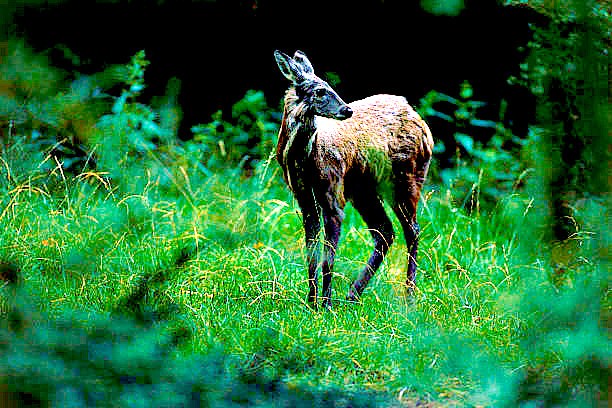As the name suggests, musk deer are responsible for the production of musk, a strong-smelling substance that is one of the most expensive animal products in the world. Unlike true deer of the family Cervidae, the male Siberian musk deer does not possess antlers, but instead has two prominent, tusk-like canine teeth, which protrude below the lower jaw. These grow throughout the deer’s life and may reach up to 10 centimetres in length. The Siberian musk deer has a stocky body, with relatively short, thin front legs and longer, more powerful hind legs. The structure of the legs, the curved spine and large rear, mean that, rather than running, this species moves with a bounding gait. The fur of the Siberian musk deer is long and dense, coloured dark brown on the body, and mostly grey on the head, with some brown areas at the crown and around the long, hare-like ears. The hooves are long, wide and pointed, with the extra surface area helping to keep the deer from sinking into soft ground and snow.
Scent plays an important part in the life history of the Siberian musk deer, hence the male has three kinds of scent gland: the interdigital gland between the toes, the caudal glands at the rear and the musk gland, a smooth, round pod about 3 centimetres wide, located between the genitals and the navel. In an adult male, the musk gland produces about 28 grams of musk, a dark red-brown, waxy substance, the smell of which can be detected by humans at just 1 part in 3,000. |

